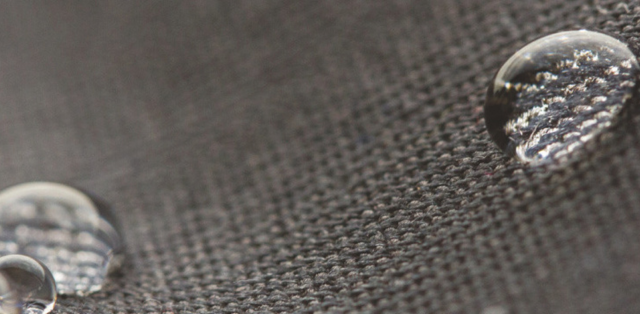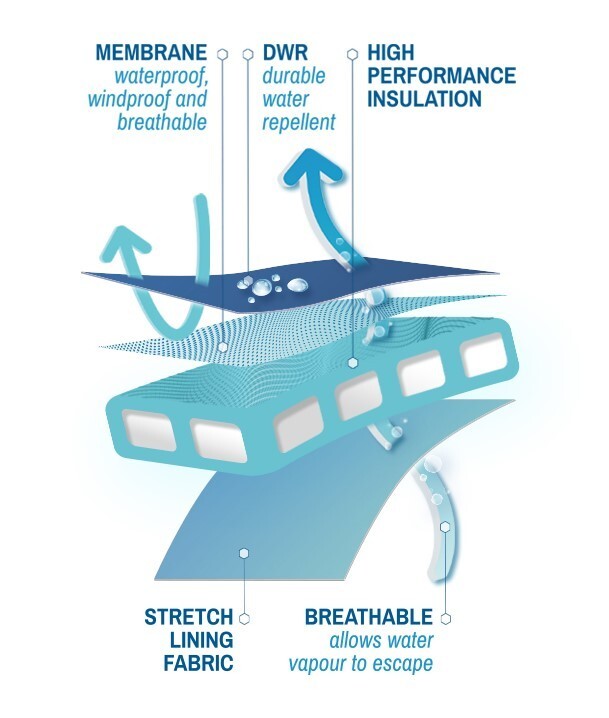What is the difference between ‘water resistant’ and ‘waterproof’? It can be sometimes confusing as to what is exactly meant by these terms. Yet it is very important to know what type of rainwear to choose. After all, it is essential that you stay dry while working. This article gives you a clear explanation.
Before we delve further into the differences between waterproof and water resistant, it is important to get acquainted with the water column. This is a measure of how much water a fabric can withstand.
The height of the water column is expressed in millimetres (mm). The higher the value, the more waterproof the garment is. See below for an overview.
-
0 millimetres: not waterproof.
-
0 - 1000 millimetres: water resistant.
-
1000 - 5000 millimetres: waterproof against rain but not resistant to pressure. Leakage is possible when pressure is applied to the material (for example, while sitting or leaning on a wet surface).
-
5000 - 15,000 millimetres: very waterproof, suitable for heavier rainfall.
-
15,000 - 30,000 millimetres: highly waterproof, suitable for extremely wet conditions such as downpours or snow, for example, skiwear.
What exactly does ‘water resistant’ mean? According to the Dutch Van Dale dictionary, a water-resistant fabric exhibits no adhesion to water. This means that such fabrics do not attract water.
Water-resistant fabrics are perfect for braving light rain showers. They are indicated by a water column between 0 and 1000 millimetres.
Please note! In case of heavy rain, a water-resistant fabric is not enough. The rain will penetrate the fabric, as a result of which the underlying clothing gets wet. So it is important to remember that water-resistant clothing will only keep you dry for a short period of time.
Durable Water Repellent (DWR)
DWR is a special coating applied to textiles. This is done to improve the fabric’s water-resistant properties. The water-resistant coating forms a thin, invisible layer that prevents water droplets from penetrating the material. The water literally rolls off the garment.
Waterproof fabrics are impervious to water. They provide the necessary protection during heavy rain. A waterproof fabric has a water column of at least 1000 millimetres.
Waterproof zippers and seams
Are you looking for a completely waterproof product? Then you should consider more than just the fabric. You must also take into account:
-
The seams: most raincoats have taped seams that prevent rain from leaking through the seams.
-
The zipper: make sure that water cannot pass through the zippers. Is the zipper waterproof? Or is there a piece of fabric over the zipper that keeps the water at bay?
-
The closure of the sleeves.
-
The fit of the hood.
What about breathability?
A breathable fabric expels water vapour through the material, away from your body. This is a must, otherwise your body will become wet along the inside due to sweat, for instance, making you feel cold.
So make sure to choose a breathable fabric for waterproof or water-resistant clothing. This feature is also known as MVP or Moisture Vapour Permeability.
For optimal comfort, you should dress according to the three-layer system. Interested in knowing more? Make sure to read our blog.
How is breathability measured?
We measure breathability by the amount of water vapour that can pass through a square metre of fabric over 24 hours. This result is expressed in g/m²/24h. The higher the MVP value, the greater the breathability of the fabric.
For reference, a garment is considered highly breathable from 10,000 g/m²/24h onwards.
However, it should be noted that breathability decreases as the waterproofing of a garment increases.
So what is best for me: water-resistant or waterproof clothing?
Choose water-resistant or waterproof clothing depending on the type of activity you are going to do. During longer periods of rain, opt for a waterproof jacket. In case of light showers, go for a water-resistant jacket. In addition, always keep in mind the breathability factor to ensure that perspiration is easily wicked away. This will keep you nice and warm!
Now that you know the difference between ‘waterproof’ and ‘water resistant’, you can select the right rainwear with confidence. And you can start doing so at DASSY®. Discover our range of work jackets. Did you know that DASSY® Nordix is the favourite of numerous professionals?



